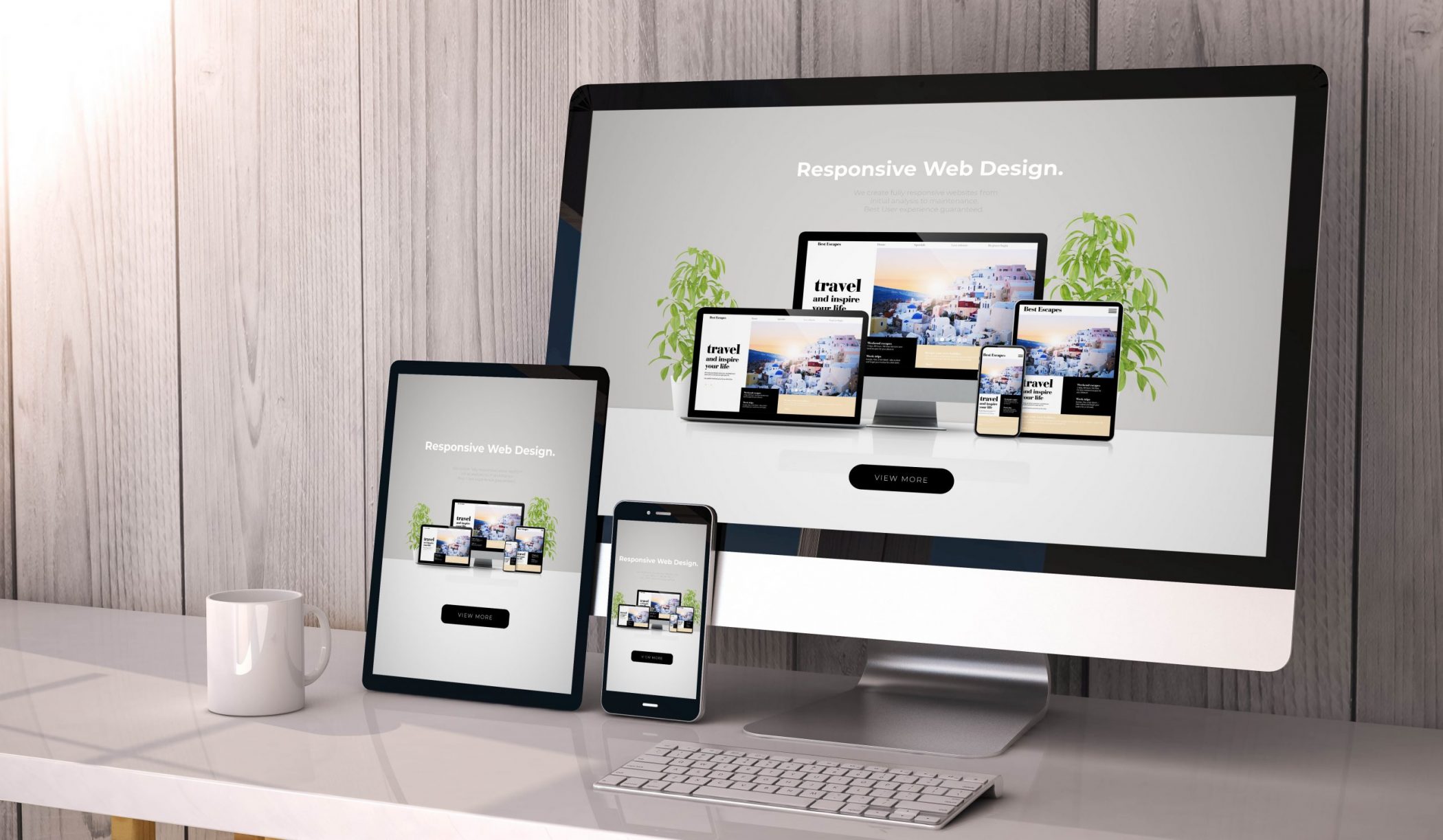8 effective strategies every Website Design Agency uses to create stunning sites
The Significance of User Experience in Effective Web Design Methods
User experience (UX) offers as a foundation in reliable web design techniques. It forms exactly how individuals connect with a website, affecting their fulfillment and likelihood of returning. A well-designed UX can enhance interaction through intuitive navigation and responsive designs. Forgeting these facets might lead to aggravation and increased bounce prices. Recognizing the intricacies of UX is important for designers intending to create compelling electronic experiences that resonate with diverse target markets. What variables really drive effective user interaction?
Comprehending User Experience and Its Effect On Layout
Although user experience (UX) is commonly viewed as a plain facet of web design, it basically shapes just how users interact with a website. UX includes all aspects of the user's interaction, consisting of usability, accessibility, and total satisfaction. A favorable UX promotes interaction, motivating users to explore the website and return in the future. On the other hand, a negative experience can cause aggravation, leading to high bounce rates and shed opportunities for conversion.
Design components like web content, layout, and navigation organization play critical duties fit this experience. Effective UX style prepares for user requirements and preferences, making certain that details is quickly accessible and visually appealing. Furthermore, understanding user habits via analytics can offer valuable insights, educating layout choices that enhance use. Inevitably, an extensive understanding of UX enables designers to produce internet sites that not just draw in customers but likewise advertise significant communications that line up with organization objectives and user assumptions.
Trick Principles of Effective User Experience
Effective user experience rests on a number of essential concepts that enhance site capability and interaction. Instinctive navigation design, receptive format essentials, and the importance of aesthetic pecking order are vital elements that add to a seamless interaction in between users and internet material. Understanding these concepts enables developers to develop even more easily accessible and straightforward digital atmospheres.
Intuitive Navigating Design
When individuals experience an internet site, intuitive navigation design functions as a vital gateway to their overall experience. Effective navigating permits customers to easily find the information they seek, boosting their communication with the website. Trick concepts include clear labeling, logical organization, and regular placement of navigating elements. Tags must be uncomplicated, permitting customers to forecast the web content they will certainly discover. A well-structured power structure aids customers recognize the connection between various areas, guiding them via the website perfectly. In addition, responsive food selections and conveniently available links add to a liquid experience across devices. By prioritizing intuitive navigation, developers can greatly lower user stress and boost involvement, eventually cultivating a positive understanding of the internet site and its content.
Receptive Format Basics
A well-structured navigating system naturally brings about the need for a responsive layout, which is important in today's varied electronic landscape. A responsive format assurances that websites feature effortlessly throughout different gadgets, including smart devices, tablet computers, and desktops. This flexibility improves user experience by permitting content to be aesthetically coherent and conveniently available, no matter of display size. Key principles of responsive layout consist of fluid grids, versatile pictures, and media inquiries, which promote optimal watching. Furthermore, prioritizing touch-friendly aspects boosts interaction on mobile gadgets. By implementing a receptive format, developers can fit individuals' requirements, reduce bounce prices, and boost interaction. Ultimately, a well-executed receptive design fosters a positive user experience, motivating visitors to check out the internet site further.
Visual Pecking Order Relevance
Visual power structure plays an essential role in guiding users via a site, making certain that critical info records their attention initially. By purposefully making use of dimension, spacing, color, and contrast, designers can develop a clear path for users to adhere to. Bigger components frequently draw the eye, showing their significance, while contrasting colors can highlight telephone calls to action. In addition, regular positioning and collection of relevant web content boost understanding, making navigation intuitive. Efficient usage of visual pecking order not just enhances use yet additionally sustains the general aesthetic of the website, fostering a favorable user experience. When individuals can quickly determine one of the most crucial details, they are most likely to engage with the material, leading to raised fulfillment and communication with the website.
The Duty of Use in Web Design
Functionality plays an important duty in web design, particularly through navigation simplicity and adherence to availability standards. Effective navigating improves user complete satisfaction by enabling visitors to locate info promptly and with ease. On the other hand, meeting ease of access requirements ensures that all individuals, despite their capacities, can properly interact with the website.
Navigation Simpleness
Simplicity in navigation stands as a cornerstone of reliable web design, considerably affecting user experience. A streamlined navigating system permits individuals to find information rapidly and intuitively, minimizing aggravation and improving satisfaction. Clear labeling and rational structure are crucial components, assisting users effortlessly via the site. Repetitive links or excessively intricate menus can confuse users, causing raised bounce prices. Furthermore, mobile responsiveness needs to be taken into consideration, guaranteeing navigation continues to be simple throughout tools. Lessening and focusing on vital web pages clutter further sustains user involvement. Efficient navigation not only fosters a favorable Discover More Here experience however likewise motivates individuals to discover the site better, eventually leading to greater conversion rates. In this regard, navigation simpleness works as a crucial factor in the overall effectiveness of web design approaches.
Ease of access Criteria
User interaction is greatly enhanced when web sites comply with ease of access requirements, making certain that all customers, no matter their capabilities, can navigate and communicate efficiently. Compliance with these criteria not only broadens the target market but likewise boosts general user fulfillment. Available design incorporates functions such as message choices for images, key-board navigation, and enough color comparison, which promote use by people with disabilities. On top of that, implementing these standards can positively affect search engine optimization (SEARCH ENGINE OPTIMIZATION) by boosting website structure and clearness. As web design progresses, focusing on accessibility ends up being essential in cultivating a comprehensive digital setting. By welcoming these requirements, designers add to a much more equitable net, eventually driving user commitment and interaction.
Relevance of Responsive Design for User Interaction
As customers progressively accessibility web sites with a selection of devices, the importance of responsive layout becomes extremely important for involving users properly. Receptive style assurances that a site adjusts seamlessly to different screen sizes, giving a suitable viewing experience despite the tool used. This flexibility enhances user engagement by helping with easier navigating and communication with material.
When individuals run into an internet site that is receptive, they are most likely to stay longer, check out additionally, and return in the future. A properly designed responsive design reduces the irritation often connected with scrolling and zooming on smaller sized displays, therefore lowering bounce prices. Furthermore, receptive style can favorably affect online search engine rankings, as internet search engine prioritize mobile-friendly internet sites. In today's digital landscape, where mobile use proceeds to increase, executing receptive design is not simply valuable, but necessary for preserving user interaction and assuring a favorable experience throughout all devices.
Enhancing Load Times for Better User Satisfaction

To improve lots times, internet developers must focus on optimizing photos, leveraging internet browser caching, and reducing HTTP demands. Furthermore, utilizing Content Shipment Networks (CDNs) can expedite material shipment by dispersing it across different geographic locations. Simplifying code, such as compressing CSS and JavaScript documents, additionally contributes to much check it out faster loading rates.
Eventually, a commitment to enhancing tons times not only enhances user contentment but also strengthens brand loyalty and boosts the probability of repeat sees. A swift, seamless experience is essential for preserving customers and promoting positive interactions.
The Impact of Visual Hierarchy on User Interaction
Aesthetic power structure works as a necessary aspect in assisting user interaction on a site. By organizing material in such a way that prioritizes info visually, designers can affect exactly how individuals involve and navigate with a site. This power structure is developed with numerous design techniques, consisting of size, comparison, spacing, and shade. Larger typefaces or strong colors attract attention to critical aspects, such as telephone calls to activity or headlines, while restrained shades and smaller font styles can suggest subservient info.
Efficient visual power structure helps individuals rapidly recognize what is most vital, reducing cognitive tons and boosting use. It allows for instinctive navigating, making it easier for customers to find what they need without stress. As customers engage with a web site, a well-structured visual pecking order fosters a more satisfying experience, eventually causing greater engagement and conversion rates. Developers have to focus on these concepts to create an user-centered and reliable web atmosphere.
Determining User Experience: Tools and Techniques

Regularly Asked Questions
How Can I Enhance My Internet site's User Experience on a Spending plan?
To boost a website's user experience on a spending plan, one can maximize web page lots speed, streamline navigation, apply responsive style, boost content clarity, and gather user comments for continuous refinements, guaranteeing a rewarding visitor experience.
What Prevail User Experience Mistakes to Stay Clear Of in Web Design?
Common user experience mistakes in web design include messy layouts, poor navigation, sluggish filling times, lack of mobile responsiveness, disregarding availability, irregular branding, and stopping working to focus on user comments - Website Design Agency. Each can substantially impede general site efficiency
Just how Typically Should I Update My Site for Better User Experience?
Sites ought to be upgraded on a regular basis, ideally every few months, to preserve ideal user experience. Constant updates help address usability problems, freshen content, and adjust to altering user demands, ensuring the site continues to be appropriate and appealing.

Can User Experience Impact SEO Rankings on My Web site?
User experience can considerably affect search engine optimization rankings, as internet search engine focus on web sites that offer smooth navigating, fast filling times, and appealing content. A positive user experience can bring about reduced bounce rates and greater search visibility.
What Role Does Availability Play in User Experience Layout?
Ease of access plays an important duty in user experience design by guaranteeing that all people, no matter of capabilities, can communicate and navigate with a website properly. This inclusivity enhances overall fulfillment and interaction amongst varied individuals.
User experience (UX) is usually perceived as a plain aspect of web layout, it essentially shapes exactly how users communicate with an internet site. User engagement is substantially boosted when sites stick to ease of access requirements, making certain that all individuals, regardless of their capacities, can browse and communicate effectively. Determining user experience (UX) is vital for recognizing just how effectively a web site meets the demands of its customers. In addition, use testing, where actual customers navigate the site while viewers note troubles, provides straight feedback on user experience. Typical user experience mistakes in internet layout include messy formats, bad navigating, sluggish loading times, lack of mobile responsiveness, overlooking ease of access, inconsistent branding, and failing to focus on user feedback.